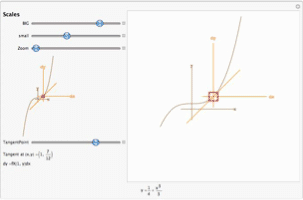
Advanced Calculus using Mathematica
Advanced Calculus using Mathematica: NoteBook Edition is a complete text on calculus of several variables written in Mathematica NoteBooks.
Local linearity: microscopic analysis of smooth quantities
A geometric interpretation of the tangent procedure is that the procedure computes what we would see in an infinitely (or “sufficiently”) powerful microscope. The text has animations that let you increase the magnification in the following cases:
Zooming in on and explicit curve.
Zooming in on an explicit surface.
Zooming in on a parametric curve.
Zooming in on a parametric surface.
Zooming in on coordinates in 2D
Zooming in on coordinates in 3D
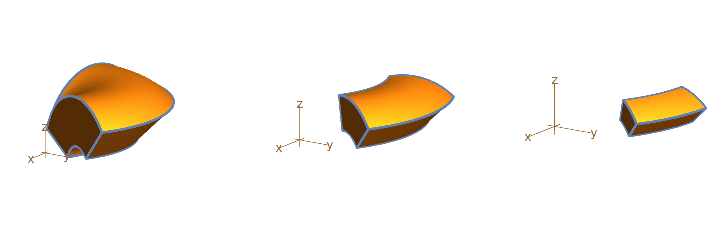
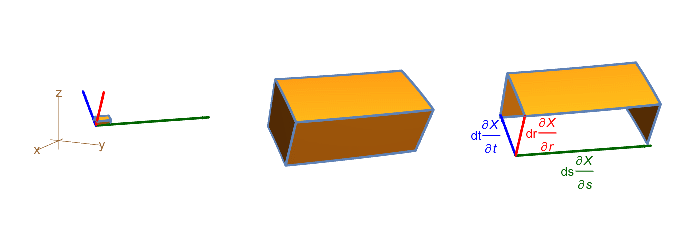
Microscopic divergence and curl 2D
In Section 12.4 we show that flow along and across a small rectangle can be reduced to the linear vector field case because of the small oh approxiamtion:
![]() , with ε≈0 when
, with ε≈0 when ![]() ,
,
Then we can break the linear term ![]() into cases and show the result of Green’s theorem by just geometry. The sum of this result over a grid of small rectangles gives the integral Green’s formulas.
into cases and show the result of Green’s theorem by just geometry. The sum of this result over a grid of small rectangles gives the integral Green’s formulas.
The Case ![]() shown with
shown with ![]()

The Case ![]() shown
shown ![]()

The Case ![]() shown with
shown with ![]()

The Case ![]() shown with
shown with ![]()

Microscopic divergence and curl 3D
The approach above for microscopic divergence in 2D works in 3D, but in Section 19.6 we take a different microscopic look at a vector field. The linear approximation given by  can be written as a sum of a symmetric matrix and an antisymmetric matrix:
can be written as a sum of a symmetric matrix and an antisymmetric matrix:
The symmetric part,

![]()
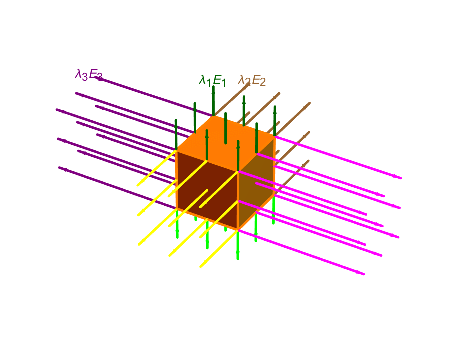
The antisymmetric part,

 , with
, with  and
and  , by Exercise 2.
, by Exercise 2.
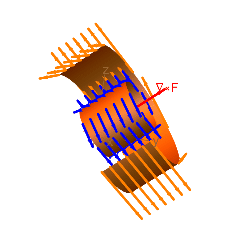
Zooming in on an flow equilibrium